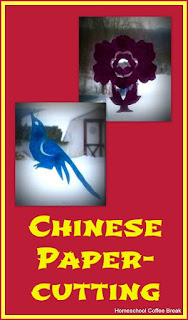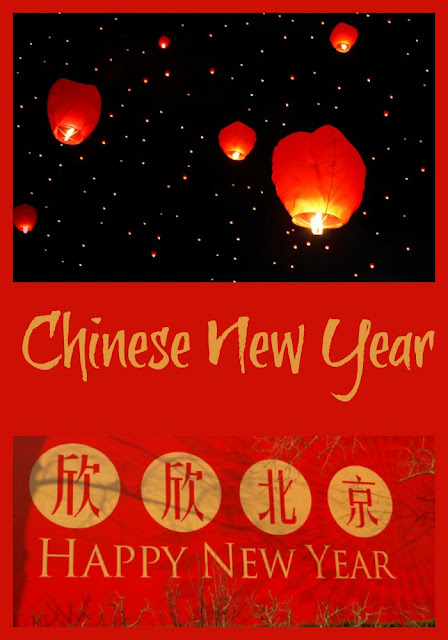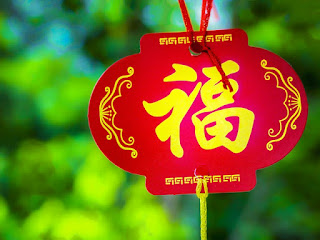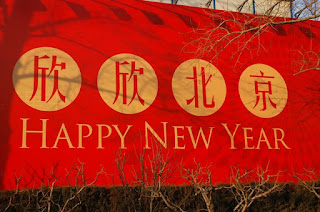This post contains affiliate links - using affiliate links from HS Coffee Break helps fuel this blog.
Happy New Year!
I'm not going to pretend I know very much about China, the Chinese culture, or Chinese New Year celebrations, because anything I do know has been gleaned from little bits of research over the years. Years ago, when my kids were young, there were several years when we took the opportunity of Chinese New Year to focus a bit on the celebration, learn a bit about it, and have a bit of fun with it ourselves.
Unlike our western (or Gregorian) calendar, the traditional Chinese calendar is based on a lunisolar year. That means the dates are based on both the phase of the moon and the time of the solar year. So the Chinese New Year falls on a different date each year. In 2023, the Year of the Rabbit begins on January 22nd. The Spring Festival celebration last for sixteen days, although only the first seven days are part of the public holidays in China and several other countries. The festivities end with the Lantern Festival on February 5th. During the days of New Years celebrations, people display traditional decorations, and get together with family. In fact, this is the favored time for family reunions, and it's very important to visit grandparents and other elders. Shopping, fireworks, and visiting tourist destinations are also part of the festivities.
I'm not going to pretend I know very much about China, the Chinese culture, or Chinese New Year celebrations, because anything I do know has been gleaned from little bits of research over the years. Years ago, when my kids were young, there were several years when we took the opportunity of Chinese New Year to focus a bit on the celebration, learn a bit about it, and have a bit of fun with it ourselves.
Unlike our western (or Gregorian) calendar, the traditional Chinese calendar is based on a lunisolar year. That means the dates are based on both the phase of the moon and the time of the solar year. So the Chinese New Year falls on a different date each year. In 2023, the Year of the Rabbit begins on January 22nd. The Spring Festival celebration last for sixteen days, although only the first seven days are part of the public holidays in China and several other countries. The festivities end with the Lantern Festival on February 5th. During the days of New Years celebrations, people display traditional decorations, and get together with family. In fact, this is the favored time for family reunions, and it's very important to visit grandparents and other elders. Shopping, fireworks, and visiting tourist destinations are also part of the festivities.
Countries that also recognize the Lunar New Year and Spring Festival include: Vietnam, Thailand, North Korea, South Korea, Taiwan, Indonesia, Malaysia, and others. Chinese and Asian communities all over the world celebrate as well, so urban Chinatowns in major cities will be busy and popular places this week!
Preparations begin about a month in advance, as people start buying presents, getting decorations ready, and planning meals. On New Years Eve, it's time to clean the whole house, sweeping away bad luck along with the dust and cobwebs, I suppose.
One of the traditional ways of decorating is to display paper cuttings in windows. These folk art "window flowers" are on display throughout the year, but especially during the Spring Festival. Templates of simplified Chinese papercuts can be found online, and you can create some of your own. We've done it a few times in the past, and it was an activity in a co-op class many years ago.
From my post: Virtual Refrigerator - Chinese Paper-Cutting

One of the traditional ways of decorating is to display paper cuttings in windows. These folk art "window flowers" are on display throughout the year, but especially during the Spring Festival. Templates of simplified Chinese papercuts can be found online, and you can create some of your own. We've done it a few times in the past, and it was an activity in a co-op class many years ago.
From my post: Virtual Refrigerator - Chinese Paper-Cutting

If you've ever cut out paper snowflakes to decorate during the winter, you've got a bit of experience with something very similar to Chinese paper-cutting. Paper as we know it was a creation of a Chinese court official in about 100AD. At first paper was expensive so only the wealthiest or royal Chinese people could afford it for crafting paper cuttings. As paper became more affordable, all classes of society participated and paper cutting became an important folk art. Today, at festival times, cut paper designs are sold and are given as gifts and greetings. Traditional designs feature animals (often pandas, dragons, or tigers), birds, or flowers. For the Chinese New Year, the animal sign for the year is a popular choice. The traditional color of paper used is red because it represents good luck and success.
Another type of decoration is calligraphy on red paper. "Fu" which means "happiness and good fortune" is very popular. These can be displayed on walls, doors, or windows. Similar designs are sometimes added to the paper lanterns used in the Lantern Festival. Lanterns can be basic shapes or more elaborate, like lotuses or even dragons. People might write poetry or wishes on the lanterns before releasing them, hoping that their wishes will come true in the new year.
During family visits, Chinese grandparents and elders give younger relatives gifts of money in red envelopes. Red because it's a lucky color! Long ago, Chinese currency was in the form of coins with a hole in the middle. They could be strung on a red cord as a gift. Eventually that tradition changed to red paper or red envelopes to hold paper money. Nowadays, digital red pockets are quite popular.
So with all the red and gold decorations and symbols, golden colored fruits are popular during the Spring Festival. Favorites include kumquats, tangerines, mandarin oranges, and peaches. Also the Chinese character for tangerine looks similar to the character for luck! Traditionally, dumplings should be eaten at every meal during the Spring Festival, especially in the northern part of China. In the south, spring rolls are more popular. Other symbolic foods eaten on New Years or during the festival are fish and noodles.
So with all the red and gold decorations and symbols, golden colored fruits are popular during the Spring Festival. Favorites include kumquats, tangerines, mandarin oranges, and peaches. Also the Chinese character for tangerine looks similar to the character for luck! Traditionally, dumplings should be eaten at every meal during the Spring Festival, especially in the northern part of China. In the south, spring rolls are more popular. Other symbolic foods eaten on New Years or during the festival are fish and noodles.
This isn't specifically related to the Chinese New Year, but it's a favorite piece of Chinese-inspired art, and it does feature red and gold - Virtual Refrigerator - Chinese Horse.
If you want to try creating this Chinese Horse for yourself (or maybe a simpler Chinese Dragon or more advanced Chinese Lion print), the full instructions are available at SchoolhouseTeachers.com along with the entire collection of lessons from ArtAchieve - Achieving Art Success with ArtAchieve. We were able to use the ArtAchieve lessons at a few different points during our homeschool years, and we really liked them! They are inspired by folk art from all over the world, and range from very simple for young children or beginner artists to more complex projects for teens or artists with more experience. All projects are designed to be completed with simple art supplies you likely already have or are easy and relatively inexpensive to acquire.
The paper-cutting crafts (and lots of other ideas) came from the book Geography Through Art which was a favorite in our homeschool. It's a combination of cultural geography information and art projects inspired by different cultures and folk art from around the world. (See my post My Favorite Geography Resource for more details.)

Check out the Chinese New Year website for lots more about this celebration and its history and traditions. Or visit OfficeHolidays.com for information about the celebration in China, South Korea, and other countries.
| Chinese Horse by KAT, April 2017 |
And yes, there's a pricing special at SchoolhouseTeachers.com right now. Use the code FRESHSTART23 to pay only $90 for nine months of homeschool curriculum. Your SchoolhouseTeachers.com membership gives you access to all 400+ courses in all subject areas and for all grade levels, plus lots of other resources too!

Check out the Chinese New Year website for lots more about this celebration and its history and traditions. Or visit OfficeHolidays.com for information about the celebration in China, South Korea, and other countries.
A previous version of this article was published on Homeschool Coffee Break in February 2019.
Don't miss a coffee break! Subscribe to HS Coffee Break by email
©2006-2023 HS Coffee Break. All rights reserved. All text, photographs, artwork, and other content may not be reproduced or transmitted in any form without the written consent of the author. http://kympossibleblog.blogspot.com/
We are a participant in the Amazon Services LLC Associates Program, an affiliate advertising program designed to provide a means for us to earn fees by linking to Amazon.com and affiliated sites.






